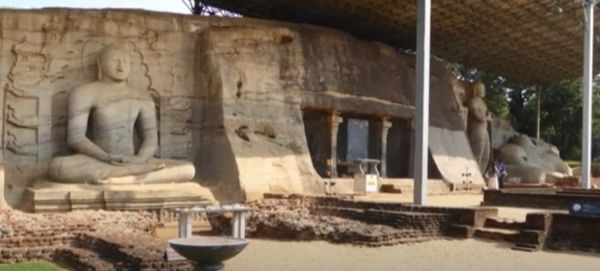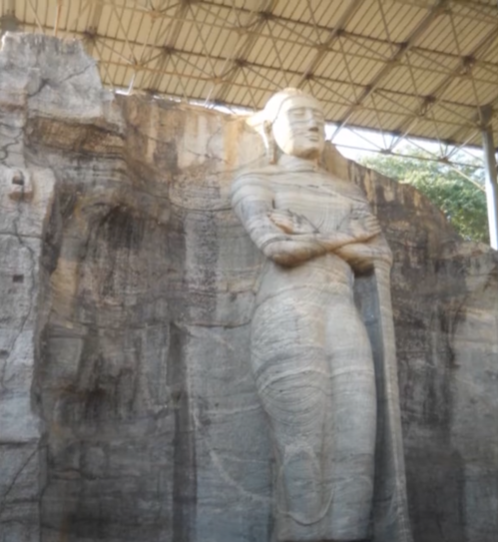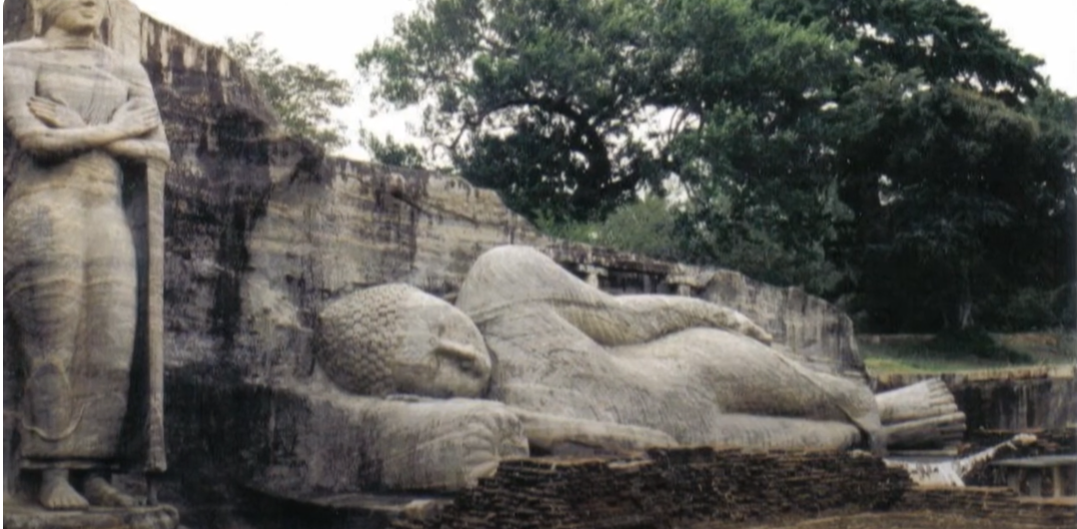Gal Viharaya: A Gem of Polonnaruwa’s Ancient Splendor-by kalani-eLanka

Nestled within the ancient city of Polonnaruwa in Sri Lanka, the Gal Viharaya (also known as the Rock Temple) stands as a testament to the island’s rich cultural and religious heritage. This remarkable site, dating back to the 12th century, showcases some of the finest examples of ancient Sinhalese rock carving and is a significant landmark in the history of Buddhist art.
The Gal Viharaya was commissioned by King Parakramabahu I during his reign in the Polonnaruwa period (1153-1186 AD). Polonnaruwa, during this era, was a flourishing city and a hub of religious, cultural, and economic activities. The king’s ambitious vision was to create a place that reflected the spiritual zenith of the time, and the Gal Viharaya was a central part of this vision.
The Gal Viharaya is renowned for its four impressive Buddha statues, which are carved into a single granite rock face. These statues represent different postures of the Buddha: seated, standing, and reclining. Each sculpture is unique and demonstrates the high level of skill and artistry of the ancient craftsmen.
The seated Buddha statue is the most prominent figure at Gal Viharaya. Carved in a posture known as “Virasana,” the Buddha sits cross-legged with his hands in the “Dhyana Mudra” (meditation posture). This statue, which stands about 15 feet high, exudes a sense of calm and serenity, reflecting the meditative state of the Buddha.
Adjacent to the seated statue is a standing Buddha, which is about 23 feet high. This statue is unique because it depicts the Buddha with crossed arms, a posture not commonly seen in other Buddha statues in Sri Lanka. The facial expression is particularly striking, conveying a sense of sorrow and compassion. Some historians believe this posture signifies the Buddha in a state of deep contemplation or in the act of blessing.
The reclining Buddha, measuring 46 feet in length, represents the Buddha at his moment of passing into Parinirvana (the final state of Nirvana after death). The serene expression on the Buddha’s face reflects the peace and tranquility of the enlightened state. This statue is a powerful representation of the Buddha’s detachment from the physical world and entry into eternal bliss.
There is also a smaller seated Buddha carved inside a cavernous space on the same rock face. This statue is often overlooked due to its size but is equally significant, showcasing the intricate detailing of ancient Sinhalese sculpture.
The Gal Viharaya is not just an architectural marvel but also a site of deep spiritual significance. The different postures of the Buddha depict key moments in his journey to enlightenment and his teachings. These statues serve as a visual representation of Buddhist philosophy, emphasizing meditation, compassion, and the impermanence of life.
The Gal Viharaya has been remarkably well-preserved, allowing visitors to marvel at the intricate craftsmanship and spiritual aura of the site. Efforts have been made to maintain the integrity of these ancient carvings, ensuring that future generations can continue to appreciate their historical and cultural value.
Today, the Gal Viharaya is a major tourist attraction and a UNESCO World Heritage Site. It attracts not only Buddhists who come to pay homage but also historians, archaeologists, and art enthusiasts from around the world. The site is a symbol of Sri Lanka’s rich cultural heritage and its enduring legacy of Buddhist art and architecture.
The Gal Viharaya in Polonnaruwa is a stunning example of ancient Sri Lankan artistry and spiritual devotion. The majestic Buddha statues, carved with meticulous precision and deep reverence, continue to inspire awe and admiration. Visiting the Gal Viharaya is not just an exploration of history but also a journey into the heart of Buddhist philosophy and the timeless quest for enlightenment.









